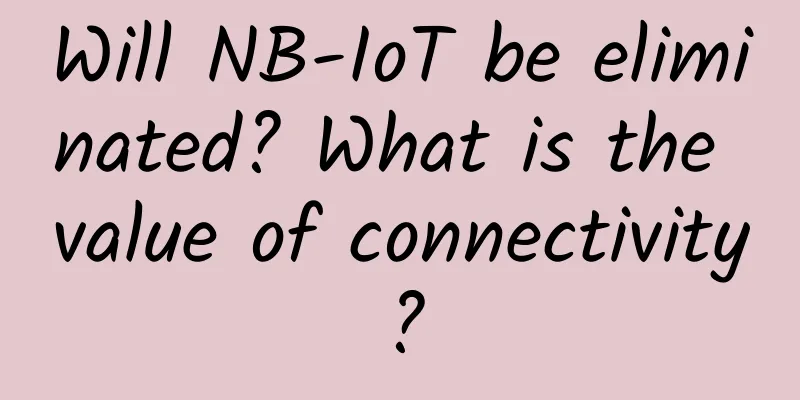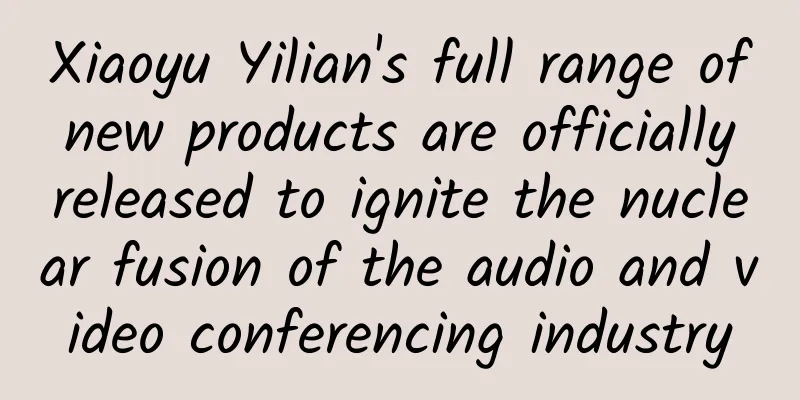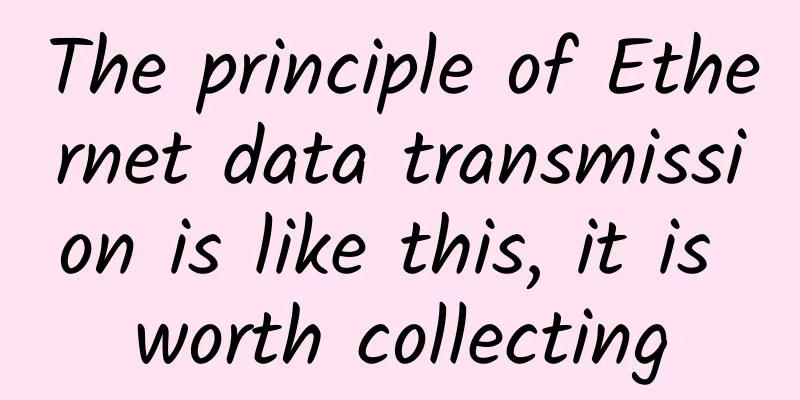Will NB-IoT be eliminated? What is the value of connectivity?

|
Just as Verizon and AT&T are commercializing eMTC nationwide in the United States and domestic operators are deploying NB-IoT on a large scale, foreign media Light Reading timely published an article titled "Incompatibility between Ericsson and Huawei hinders the development of NB-IoT", citing the conclusion of several executives in the field of the Internet of Things, "One problem facing NB-IoT is that the equipment of China's Huawei Technologies Co., Ltd. and Sweden's Ericsson are not compatible, which means there are multiple NB-IoT 'versions'." However, the above conclusion is inconsistent with the facts. The perfection of NB-IoT standards does not mean that there are differences Currently, Huawei and Ericsson are working on the interconnection and interoperability of NB-IoT. A Huawei official who has experienced the NB-IoT standard-setting process said that the process of creating this standard from scratch was painful and tortuous, but with the support of the NB-IoT industry chain including Qualcomm, the prospects are bright. Currently, NB-IoT needs to provide low-cost modules as soon as possible. "Foreign media reported that NB-IoT cannot be interconnected. I don't know what conspiracy is behind it. We and Ericsson are both conducting tests under the leadership of operators. It is objective to encounter difficulties. Earlier, Huawei's NB-IoT chip and Huawei base station could not be tested at the beginning." In April, the above-mentioned person pointed out in a public occasion, and relevant personnel from Qualcomm were also present. Compared with other industries, one of the characteristics of the communications industry is standardization, which is also the top priority affecting the development of the entire industry. In the view of Chang Gang, Ericsson's chief marketing officer in China, before the NB-IoT standard was established, Ericsson and Huawei did have different views on the details of the standard. After the standard is determined, both parties will drive the development of the NB-IoT ecosystem in a standardized manner. "If after the standard is established, people still think that Ericsson and Huawei are fighting, is the purpose behind it to widen the differences?" For the NB-IoT standard, there will always be additions or changes in the process of formation. The modification of the standard does not mean that the common position of both parties is diametrically opposed. The final standard needs to be recognized by the industrial ecosystem, so that commercialization can be better done. Chang Gang believes that "if the standard unilaterally leans towards one side, the dominant manufacturer will send confusing signals to the development of the industry. We do not think that there is a serious disagreement at present." According to him, the final NB-IoT standard was established, several key parts of which adopted Ericsson's ideas, and the industry also reached a consensus. NB-IoT industry: Interconnection can make the pie bigger In fact, in the above-mentioned foreign media reports, regarding the interoperability issue, Eric Parsons, head of 4G and RAN mobile broadband business of Ericsson's network department, said: "We have been conducting tests in customer labs for some time now and have not encountered any such problems. We are not aware of any problems and our customers have not raised any questions." Since NB-IoT is suitable for stationary applications, some industry experts believe that it is not important whether the chip supports the networks of multiple equipment manufacturers, which will not affect the overall development of NB-IoT. So, in the future, will each equipment manufacturer with a chip support its own chip and business development with its own network? Chang Gang directly denied the possibility of the existence of this hypothesis, saying that this phenomenon would not happen. "If this is the case, NB-IoT will fail." The rules for formulating communication standards are that everyone follows the same rules and works together to make the pie bigger. "NB-IoT should not be limited to the interconnection of multiple manufacturers." The field tests of relevant operators will ensure the interconnection and interoperability of multiple system equipment and chips. "These are mandatory tests, not optional tests." Currently, Ericsson's NB-IoT network has undergone interoperability tests with chips from Intel, Qualcomm, HiSilicon and others. On May 23, Mobike, China Mobile and Qualcomm launched China's first eMTC/NB-IoT/GSM (LTE Cat M1/NB1 and E-GPRS) multi-mode field test. Huang Yuhong, deputy director of China Mobile Research Institute, pointed out when talking about cellular Internet of Things that in the past, local Internet of Things technology could hardly meet customer needs. The advantage of cellular Internet of Things is that it can be connected to the Internet anytime and anywhere, and it is also a standard technology recognized globally. During the standardization phase, China Mobile cooperated with the industry chain to promote the formulation and formation of NB-IoT standards. China Mobile completed the industry's first end-to-end interoperability and laboratory technical verification based on the standard NB-IoT, and launched the country's first NB-IoT/eMTC end-to-end field technical verification test. "Any new technology needs time to be polished. We put a lot of energy into improving technology, standards and industries. This year, China Mobile will start the commercial construction of NB-IoT and will soon be able to provide high-quality and high-performance NB-IoT networks. The completion of the network will greatly promote the development of the Internet of Things." NB-IoT: Commercialization progress at home and abroad is not slow Currently, in North America, eMTC networks such as Verizon and AT&T have achieved full coverage and started to provide commercial services, with tariffs starting at US$2 and US$1.5 respectively. The three domestic operators commercialized NB-IoT later than the aforementioned big T, and it was once believed that the commercialization progress of NB-IoT was slower than that of eMTC. However, in China, including Huawei, ZTE, Datang, etc., they have made great efforts in preparing for the commercialization of NB-IoT, and are just waiting for the starting gun of the operators. According to the series of articles previously published by comobs, we can find that: 1. China Telecom should be the operator with the clearest development plan for narrowband cellular Internet of Things. In terms of NB-IoT, China Telecom is at the forefront of commercial use. All 310,000 sites on the network have been upgraded to support 800M NB-IoT. By the end of May, the country's first global connection management platform was built, and a nationwide trial commercialization was launched at the end of June, aiming to achieve seamless network coverage across the country by the end of the year. At the same time, according to the eMTC commercialization timetable disclosed at the end of 2016, China Telecom will inevitably start eMTC testing in the near future. On the other hand, China Telecom promoted the development of NB-IoT and Cat.1 modules through a subsidy of RMB 200 million. From this, we can judge that although China Telecom's focus on the development of IoT terminals in 2017 is on Cat.1, as the NB-IoT network coverage improves, the intensity of module subsidies may increase in 2018. 2. China Unicom announced the trial commercial use of NB-IoT in Shanghai in May. Shanghai has completed the construction of more than 800 sites, covering the area within the outer ring road based on 900M standalone, and can provide services such as smart parking, smart gas, and fire prevention. It is expected that the upgrade of 2,600 sites in Shanghai will be completed by the end of the year. China Unicom will use 1.8G and 900M for NB-IoT commercial network deployment, with 900M being the main choice in rural areas. "Some places may have more 1.8G spectrum resources, after all, China Unicom's 900M resources are not as abundant as China Mobile's," said Chang Gang, adding that Unicom will consider the actual spectrum situation when deploying NB-IoT. 3. Currently, China Mobile has not officially announced whether it will commercialize NB-IoT or eMTC first. However, from the parallel eMTC/NB-IoT tests last year, to the recent signing of NB-IoT shared bicycle projects with Sichuan Mobile and Huawei, Mobike has cooperated with China Mobile Government and Ericsson to support the Belt and Road Initiative, as well as the multi-mode cellular Internet of Things field tests. From the above signs, it seems that China Mobile is more likely to commercialize NB-IoT first. At the same time, China Mobile has not given up its preparations for the future commercial use of eMTC. 4. Abroad, NB-IoT has become a trend that a single spark can start a prairie fire. Vodafone expects to commercialize NB-IoT in 6 subnets around the world in 2017, serving the fields of smart parking and meter reading; by the end of May 2017, T-Mobile will achieve nationwide coverage of the standard NB-IoT network in the Netherlands; in April, LGU+ completed nationwide NB-IoT coverage and will be commercialized in July. It is worth noting that operators including the LoRa camp are also adopting NB-IoT technology. Huawei expects to build more than 30 NB-IoT networks around the world in 2017, covering 10% of countries. According to the opinions of relevant industry insiders, it is difficult to promote the scale reduction of NB-IoT module costs in a short period of time by relying solely on the promotion of China Telecom and China Unicom, and it cannot set an absolute demonstration effect for the global commercial use of NB-IoT. If China Mobile commercializes eMTC, it will be bad news for the NB-IoT industry chain. A previous comobs article also pointed out that eMTC has the effect of replacing NB-IoT in the early stage of commercial use, although the author is optimistic about the commercial value of eMTC. The value of NB-IoT: not in the connection itself In Chang Gang's opinion, the attitude of the three domestic operators towards the development of NB-IoT is very clear. Therefore, from the perspective of global development, the commercialization progress of NB-IoT and eMTC is almost the same. Secondly, the commercialization of eMTC and NB-IoT by operators is not a single choice. From the chip level, due to the support of multi-mode and multi-frequency for the commercial use of cellular Internet of Things, a complementary effect will be formed. Therefore, operators can deploy eMTC while building NB-IoT. Industry insiders predict that with the gradual advancement of commercial use, NB-IoT will achieve the goal of $5 module cost in 2018. Multi-mode chips have the ability to improve the flexibility of application scenarios. If they can achieve economies of scale without causing additional module costs, multi-mode chips will become the development trend of cellular IoT chips. However, facing the 50 billion connections in 2020, Ericsson currently has no plans to develop narrowband IoT chips, which is somewhat regrettable. The industry believes that the commercial value of eMTC is greater than that of NB-IoT. Chang Gang believes that, depending on the specific application scenarios, NB-IoT and eMTC have their own focuses. NB-IoT is more suitable for situations where mobility is not considered and sensors are deployed on a large scale. In addition to features such as mobility and narrowband Internet of Things, eMTC also supports VoLTE. Therefore, eMTC accommodates more scenarios than NB-IoT. For example, in the vehicle management solution provided by Ericsson in cooperation with relevant operators, multiple services such as positioning, sensor data transmission, and calls between drivers and the backend (rescue center) are provided simultaneously through chips containing eMTC. The value of industrial IoT lies in applications and services, not the connection itself. Ericsson and Huawei have similar views on the commercial value of NB-IoT. Ericsson experts believe that if operators do not provide industrial applications and services, they will become resource providers for IoT applications and service providers, which means they will be further away from customers. Chang Gang said that the emergence of NB-IoT and eMTC will open more windows for transformation and upgrading for traditional industries. The price of NB-IoT modules is approaching $5, which will further lower the threshold for commercial use. Based on the application of NB-IoT in the field of medical services, AstraZeneca and Ericsson have started cooperation on nebulizers. "The functions currently implemented are still very simple, including the tracking of the use of nebulizer equipment and the combination of location. The subsequent modification of the equipment will further consider the specific needs of the patient's condition." Through the atomizer + NB-IoT, traditional equipment is connected to the Internet of Things, and the popularization of network capabilities enables the superposition of functions, data, and scenarios. The aggregation of dynamic data of a single patient can provide support and help for individual treatment. The data tracking and aggregation of multiple patients and the change in data volume will bring value to data analysis (for example, foreign countries rely on big data to help people detect skin cancer early). In the future, when deep machine learning is superimposed, it will breed more value space, which is conducive to the prevention of diseases in the whole society and the generation of constructive opinions on patient treatment. |
<<: Uncovering the secrets of CDN user-driven product changes
>>: White label revolution, fighting together to carve out a bloody path
Recommend
Behind the surging IPv6, how much do you know about the DHCPv6 protocol?
With the popularization of IPv6 technology, DHCPv...
ZJI: Hong Kong VDS Superset Series 20% off 450 yuan/month, Platinum 8352Y/16G memory/240G SSD/10M CN2+BGP
ZJI is the original well-known WordPress host Wei...
Gigsgigscloud Christmas first month 80% off, Los Angeles VPS first month starting from $1
It's been a long time since there's been ...
Explore F5G industry scenario application practices and promote the digital transformation of enterprises into a new journey
More and more industry cases tell us that F5G (fi...
Hyper-converged data center network CloudFabric 3.0 builds a new data center network foundation
Recently, at the "ICT China High-level Forum...
Justhost: 20% off all VPS, 200M unlimited data, monthly payment from $1.34 in Russian data center
Justhost.ru is a Russian hosting company founded ...
5G sets new standards for IoT connectivity in vertical industries
As 5G rolls out around the world, verticals acros...
The darker operation of the United States has just begun. How can Huawei break the impasse when it is innocent but guilty of possessing a treasure?
[Original article from 51CTO.com] In just one wee...
HostDare: Los Angeles VPS with 10% off monthly payment and 30% off annual payment starting at $18/year, annual payment gives double memory + double traffic
HostDare released the latest promotion in LET, of...
5G and the Internet of Things empower the home appliance industry to promote the consumption of green and energy-saving home appliances
The great progress of social productivity has giv...
Why the coronavirus pandemic makes 5G more important than ever
While 2020 has brought unprecedented challenges, ...
Hostodo: $12/year KVM-256MB/15GB/500GB/Spokane (Washington)
Hostodo launched a new server in the middle of th...
How does 5G achieve beamforming?
Beamforming, as one of the core technologies of 5...
How 5G precision timing will change our automated world
What comes to mind when you hear the word “automa...
5G construction has not yet been completed, and countries have invested heavily in 6G research. Will my country still be ahead in 6G?
Whoever masters advanced network technology first...









